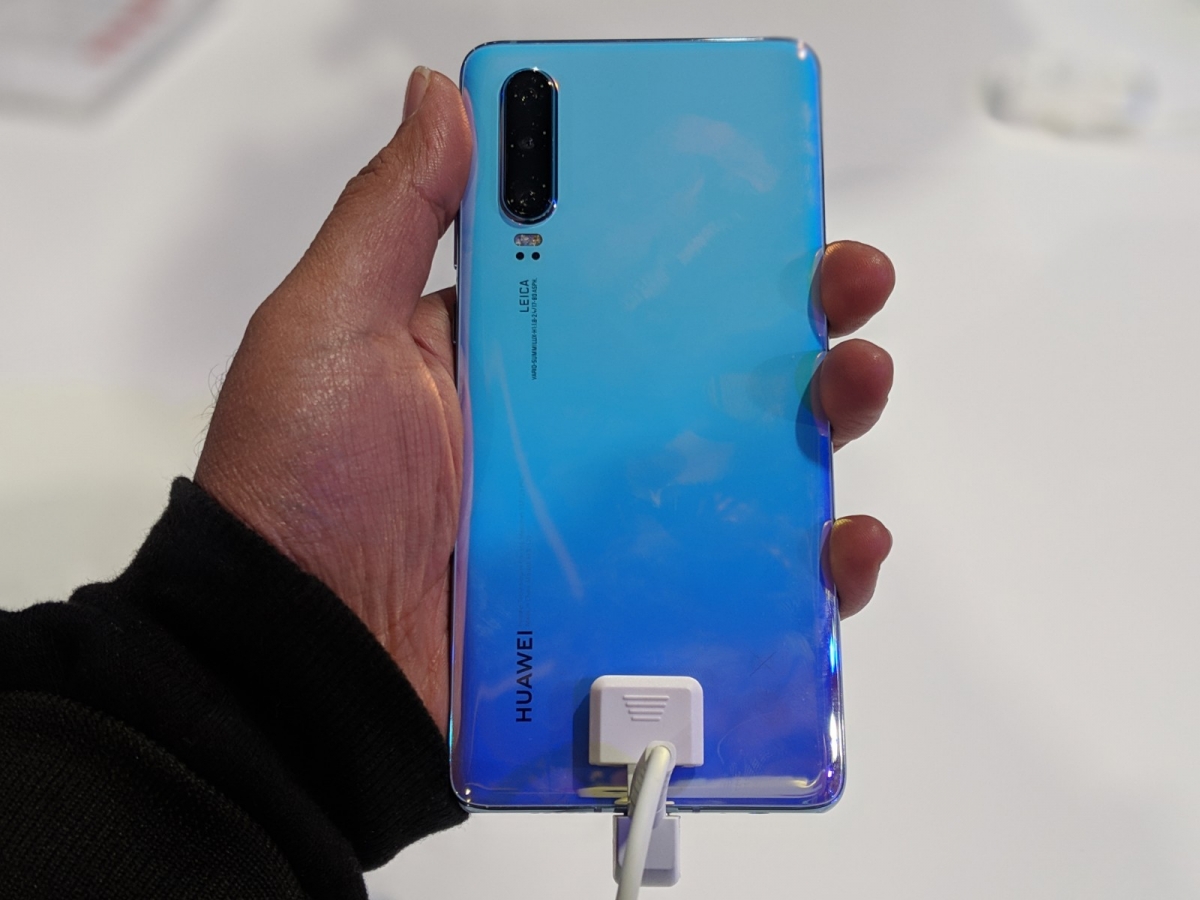I tested both the phones during their demo at the event. Huawei P30 Pro proved to be a camera masterpiece with some unseen features like 50x digital zoom and incomparable low-light capabilities. Huawei P30 has some downgrades compared to the "Pro" variant, but it refuses to settle for less.
After spending a brief time with Huawei P30 at the launch event, here are my first impressions of the latest flagship.

Design and display
Huawei P30 and P30 Pro look a lot alike but have some minor differences. The three cameras in a single vertical module, glass shiny back, bezel-less form factor in the display with a tiny circular notch and a Type-C port alongside speaker grille at the bottom is the same on both phones. The P30 differentiates itself from the P30 Pro with a smaller 6.1-inch Full HD+ OLED display compared to the 6.47-inch screen on the P30 Pro. The missing ToF sensor on the P30 is hardly noticeable as it doesn't affect the triple-camera module at the back.
I was happy with the P30 Pro design, and nothing changes with the P30 as well. The P30 feels extremely light in hand, probably the lightest flagship I've tested recently.
That said, I wished Huawei had found a way (pop-up or punch-hole) to eliminate the notch to accommodate the front camera. Another surprising change is that the P30 comes with IP53 certification, which means it is not as water and dust resistant as the IP68-rated P30 Pro.

On the bright side, there are these beautiful colours and a 3.5mm headphone jack.
Camera
Huawei P30 features a 40MP f/1.8 (27mm) primary lens paired with 16MP ultra-wide-angle secondary (27mm) lens with f/2.2 aperture and an 8MP telephoto (80mm) third lens with f/2.4 aperture. The triple camera setup is accompanied by Laser Transmitter and Laser Receiver for an enhanced focus and an LED flash. This is ideally a solid camera setup for some incredible shots, so I decided to put it to test.

Don't expect 50x zoom, but the P30 has 3X optical zoom, 5x hybrid zoom and 30x digital zoom support. If numbers matter to you, Huawei P30 has second-highest light sensitivity of 204,800. It's impressive but not as great as P30 Pro's 409,600 score.

To put things in perspective, a few shots from the P30 proved that it is able to retain the right amount of details and the dynamic range is at par with that of the P30 Pro. A dedicated booth to test the backlit portrait shot at the event demonstrated P30's biggest strength of shooting against harsh lights in the background.
I did not get the chance to test the low lights of the phone, but the zooming at 3X and 5X levels is impressive. At 30X zoom, the results are what one can expect from P30 Pro's 50X zoom. I will be testing and sharing the P30 camera samples in the near future to show you exactly what I experienced.
Performance, battery and the rest
Like the P30 Pro, the P30 is powered by the Kirin 980 chipset with dual NPU. But the handset comes with 6GB RAM and 128GB storage. If the Mate 20 Pro's performance is any indication, we can expect seamless user experience from the P30.

Huawei P30 also features an in-display fingerprint scanner, a 3,650mAh battery with 25W Huawei SuperCharge as well as reverse wireless charging support. It runs EMUI 9.1 based on Android Pie.
Is it worth it?
Huawei P30 is priced at EUR 799 (roughly Rs. 62,200), which is quite a bargain for what it offers. But if you have a few more hundred bucks to spare, the P30 Pro is a worthy upgrade I would recommend. Huawei has plans to launch the P30-series in India mid-April, so expect more from our side in the days to come.





















